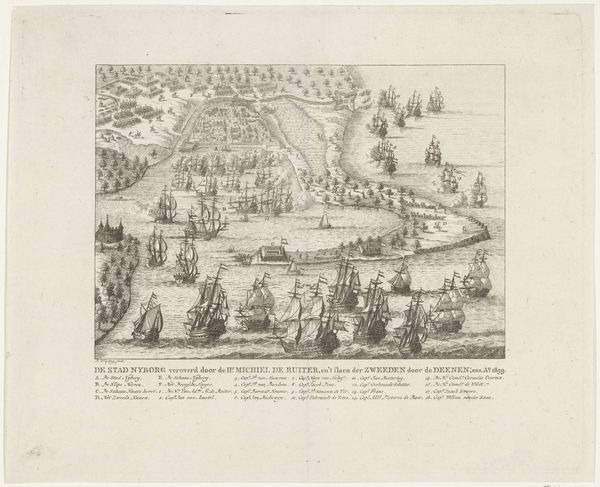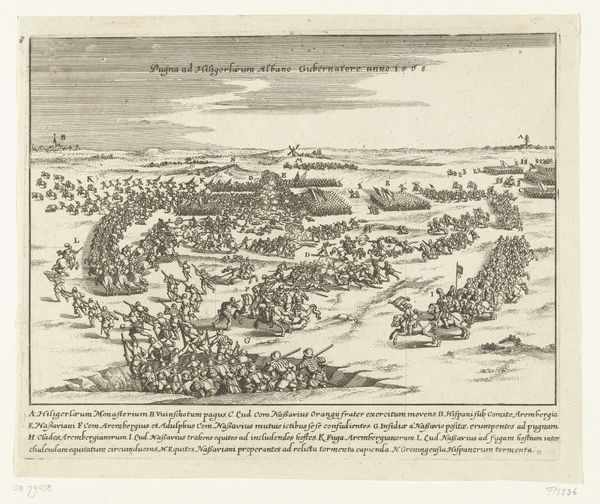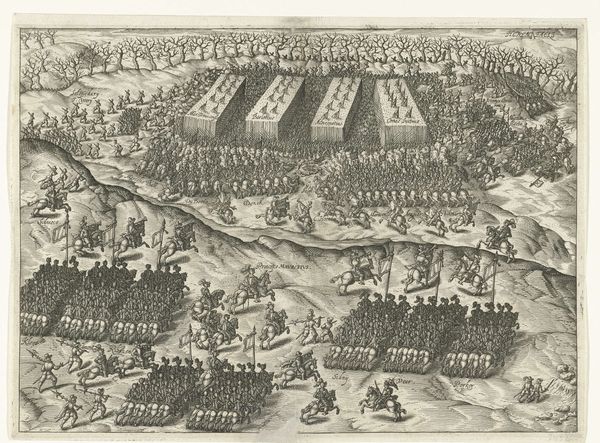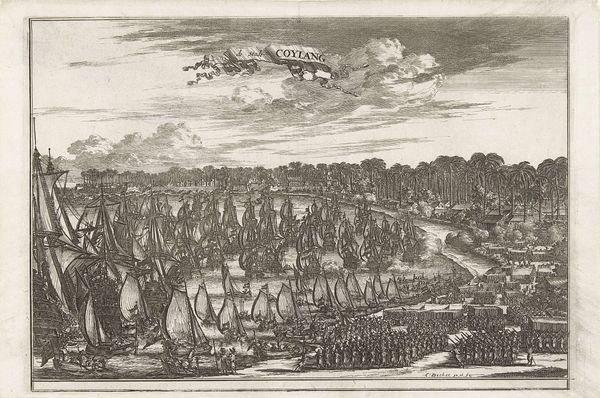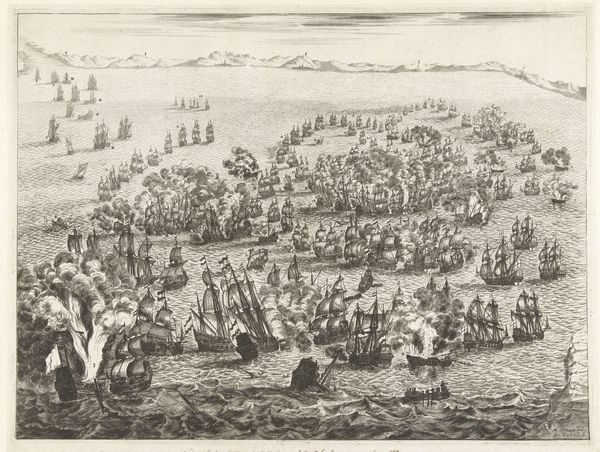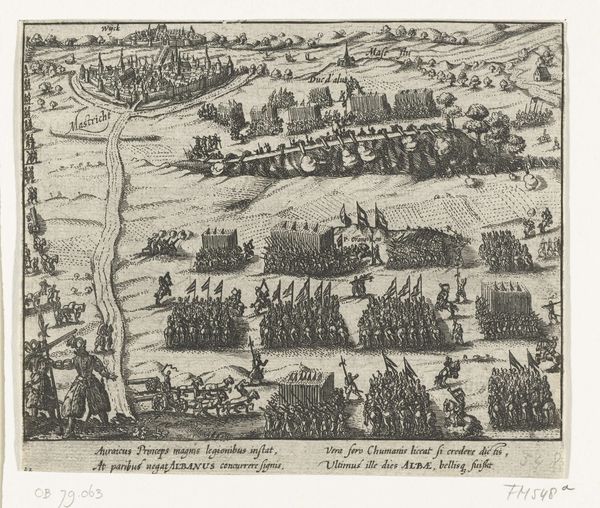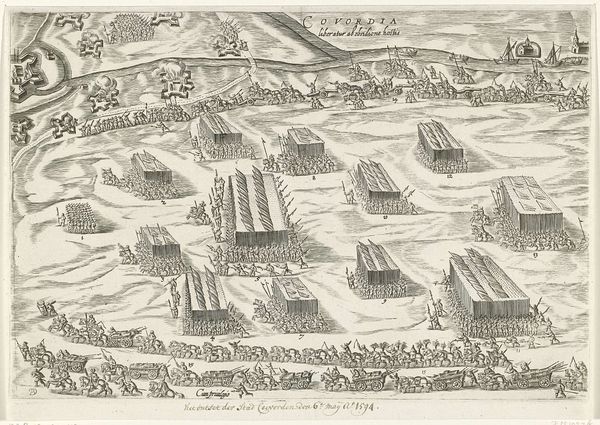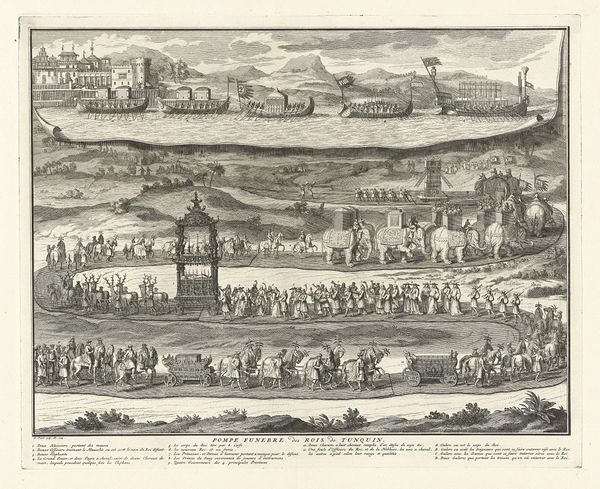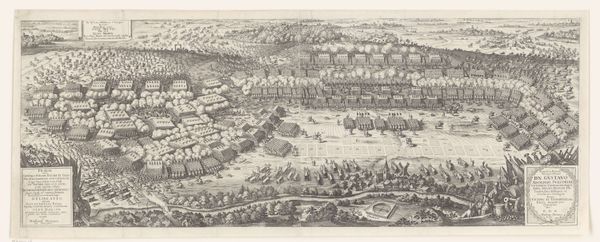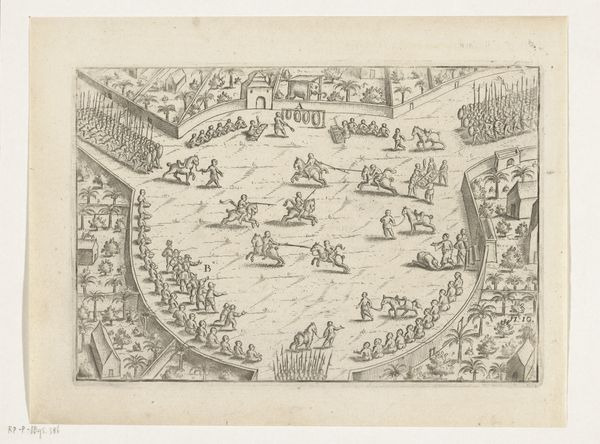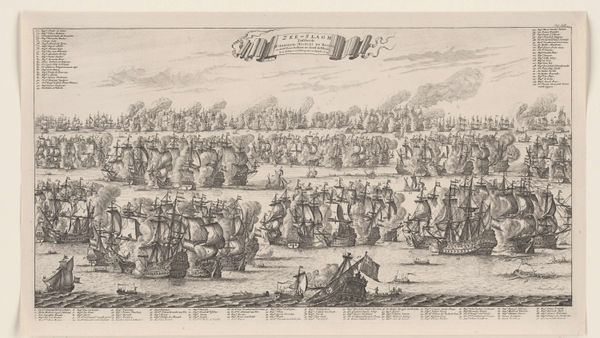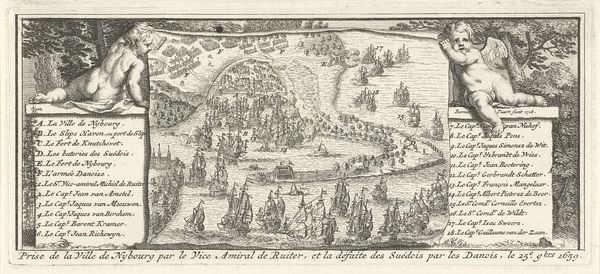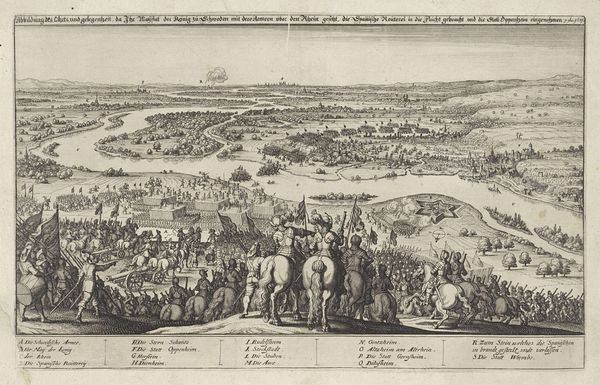
Inname van de stad Nyborg door Michiel de Ruyter, 1659 1685 - 1687
0:00
0:00
bastiaenstopendael
Rijksmuseum
print, engraving
#
baroque
# print
#
cityscape
#
history-painting
#
engraving
Dimensions: height 266 mm, width 350 mm
Copyright: Rijks Museum: Open Domain
Curator: This engraving by Bastiaen Stopendael, created between 1685 and 1687, depicts the "Inname van de stad Nyborg door Michiel de Ruyter, 1659," or, the Capture of the City of Nyborg by Michiel de Ruyter. Editor: It's captivating how much detail is crammed into a single print! There's a real sense of dramatic perspective, with the chaotic naval battle juxtaposed against the regimented city. What statement was Stopendael trying to make? Curator: As a print, this artwork would have served multiple purposes. Consider its accessibility; engravings allowed for wider dissemination of information. This image elevates naval prowess to solidify Dutch national identity through popular consumption. Editor: Exactly! We must situate this image within the larger context of Dutch power dynamics. De Ruyter, a national hero, is immortalized, but who does that narrative exclude? This glorifies war. The narrative centers on white male authority. Curator: Absolutely. We can analyze the labor behind it, as the creation of this detailed image involved many hands and hours. Stopendael likely relied on existing sketches or eyewitness accounts, meaning the artistic vision has sources that may need further examining. It shows a commodification of national pride. Editor: Let's dig into that. Who profited from these images, and how did it contribute to the solidification of national pride in the 17th Century? The material conditions of its creation is part of a broader structure of colonialism and militarism. Curator: It certainly provided income for Stopendael and the publishing houses that would have distributed it, creating markets for consumers. Editor: The image itself also tells a story. It isn’t just showing you a capture, it is promoting a sense of Dutch power to solidify its standing and promote military achievements, particularly regarding how resources and manpower where organized to create maritime trade power, Curator: Absolutely. By delving into the creation of this print and understanding how it was distributed and consumed, we can analyze its contribution to solidifying social structures within Dutch culture. Editor: We see it reflecting historical and social contexts of power that echo today, as people debate their representation in historic narratives. Understanding what lies behind images can teach us something profound.
Comments
No comments
Be the first to comment and join the conversation on the ultimate creative platform.
